This memorial contains the names of all the people killed by the bomb. See the Wikipedia site for more information.
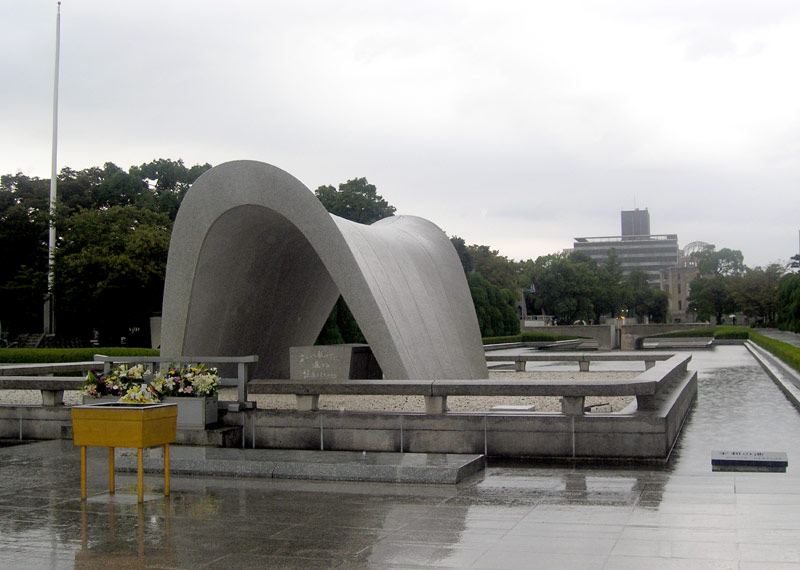
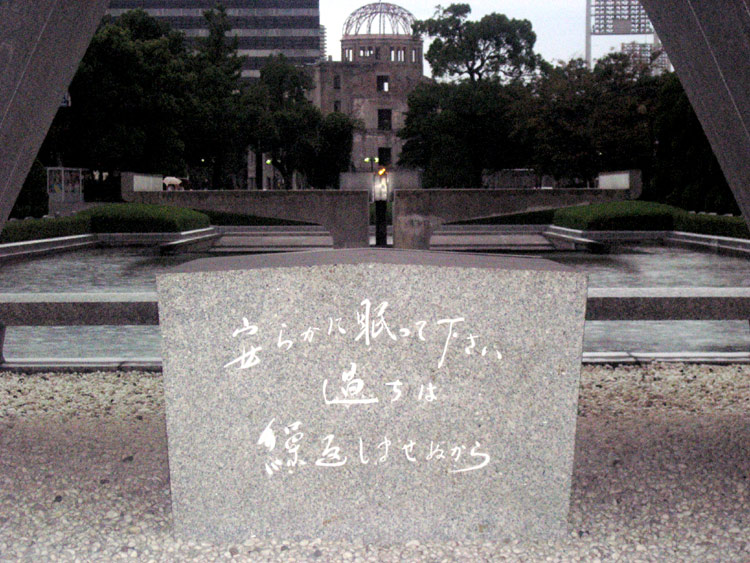
See the Wikipedia entry on Hiroshima for this and more information:
During the First Sino-Japanese War, Hiroshima emerged as a major supply and logistics base for the Japanese military. This role continued until World War II, making it an important military target for hostile forces.On August 6, 1945 the nuclear weapon Little Boy was dropped on Hiroshima by Enola Gay, a U.S. Air Force B-29 bomber which was altered specifically to hold the bomb, killing directly an estimated 80,000 [1][2] people and completely destroying approximately 68% of the city's buildings.[3] In the following months, an estimated 60,000 more people died from injuries or radiation poisoning. [4][5] Since 1945, several thousand more hibakusha have died of illnesses caused by the bomb.
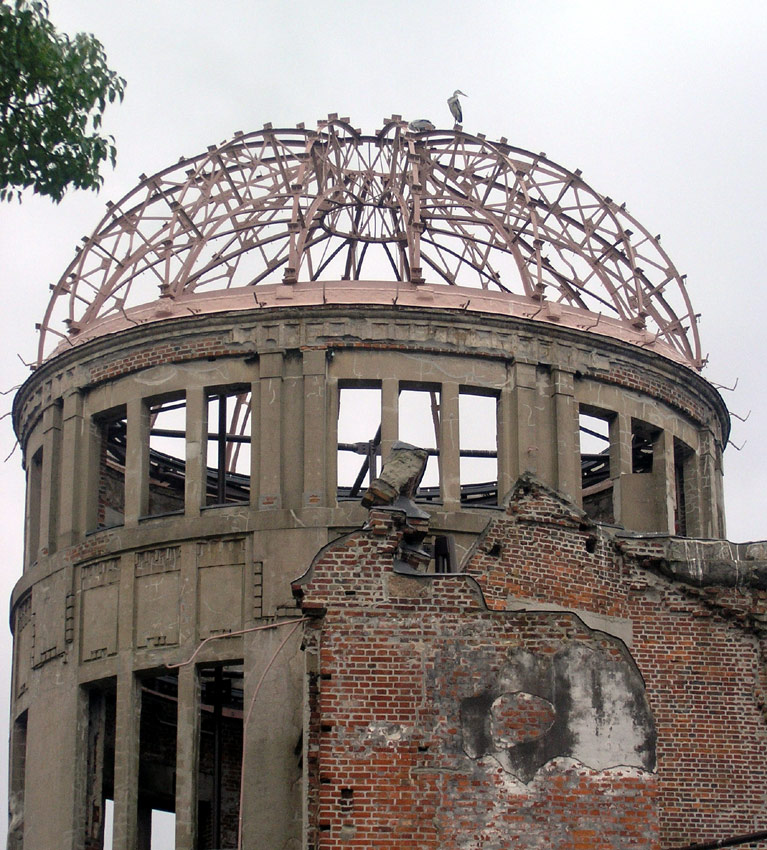
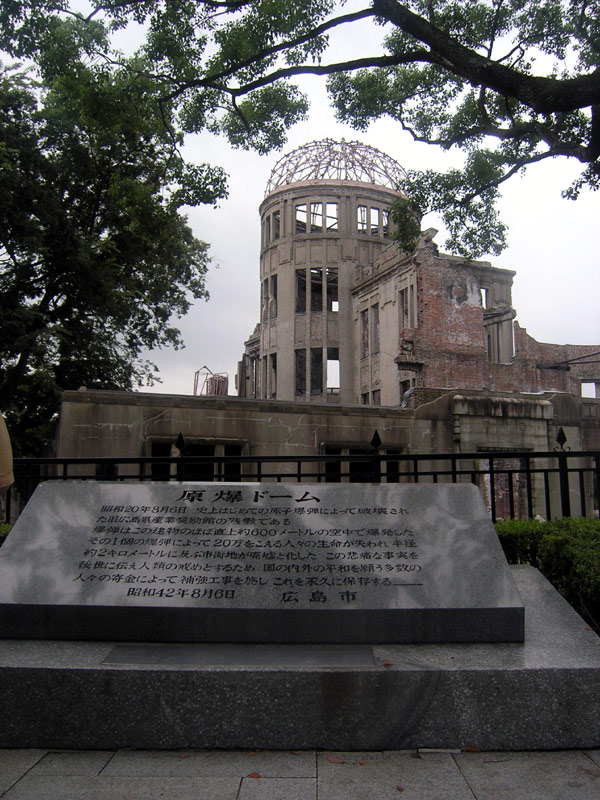
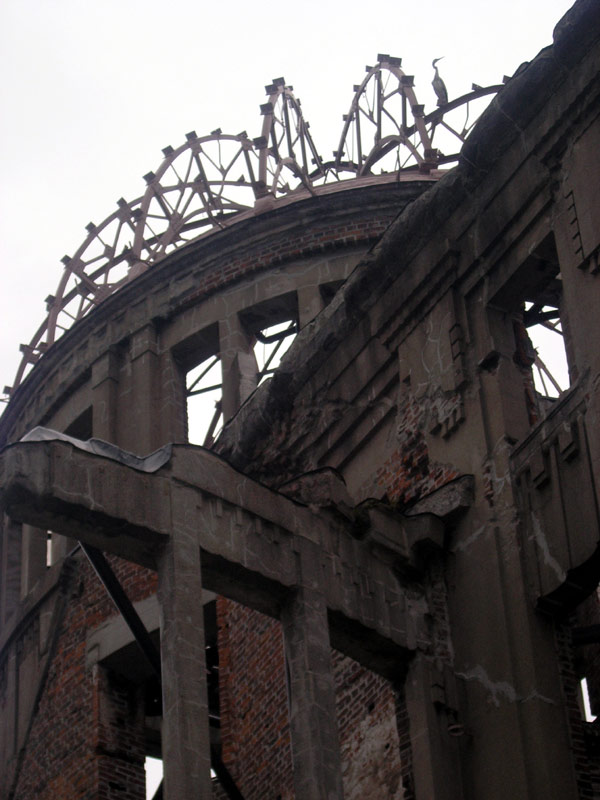
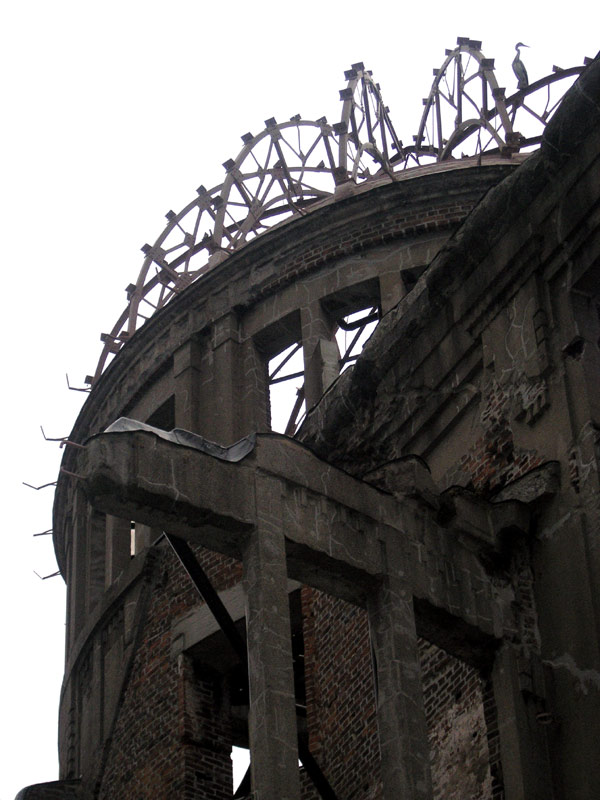
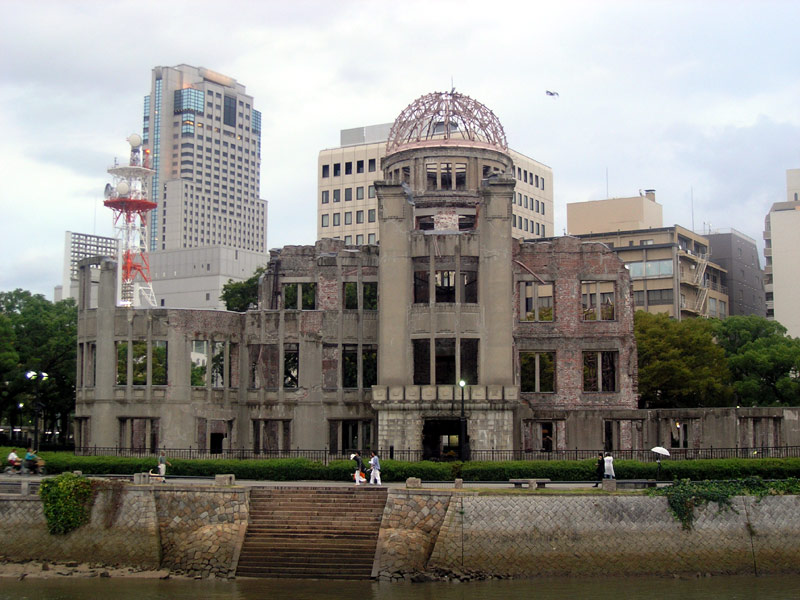
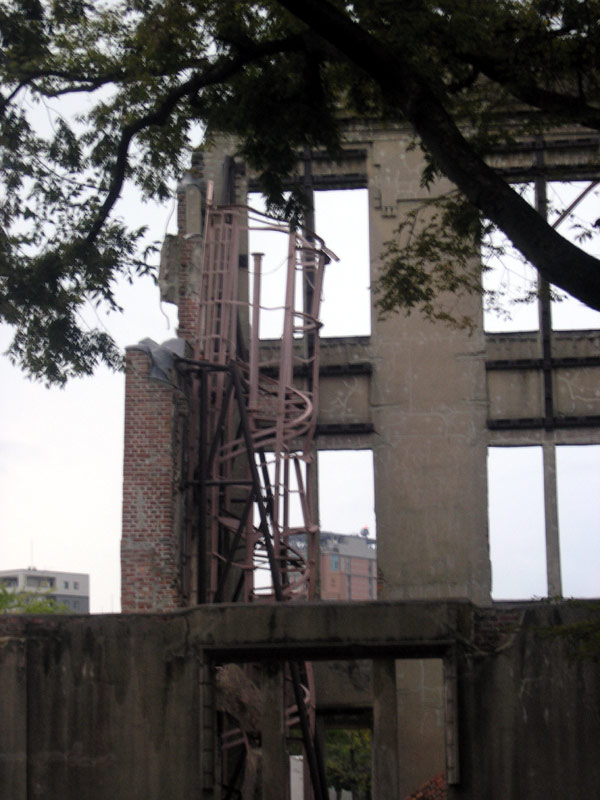
Sadako Sasaki Memorial
See the Wikipedia entry for this and more information.Sadako Sasaki (Japanese: Sasaki Sadako, January 7, 1943 - October 25, 1955) was a Japanese girl who lived near Misasa Bridge in Hiroshima, Japan. She was only two years old when the atomic bomb was dropped on Hiroshima on August 6, 1945. At the moment of explosion she was at her home, about 1 mile from ground zero. As she grew up, Sadako was a strong, courageous and athletic girl. In 1954, at age eleven, while training for a big race, she became dizzy and fell to the ground. Sadako was diagnosed with leukemia, the "atom bomb disease".
Sadako's best friend told her of an old Japanese legend which said that anyone who folds a thousand origami paper cranes would be granted a wish. Sadako hoped that the gods would grant her a wish to get well so that she could run again. However, it was not just for herself that she wished healing. It is said that what made the girl truly special in her effort was her additional wish to end all such suffering, to bring peace and healing to the victims of the world. She spent fourteen months in the hospital, and she folded over 1,300 paper cranes before dying at the age of twelve. She folded the cranes out of her medicine bottle wrappers and any other paper she could find in hopes of getting better. (A popular version of the story, given in Eleanor Coerr's Sadako and the Thousand Paper Cranes, is that she fell short of her goal of folding 1,000 cranes, having folded only 644 before her death, and that her friends completed the 1,000 and buried them all with her.)
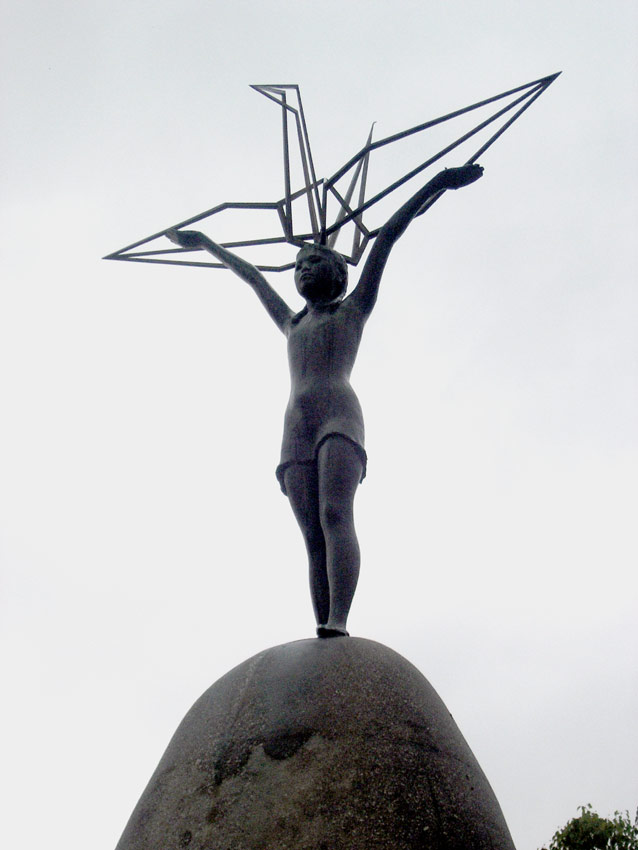
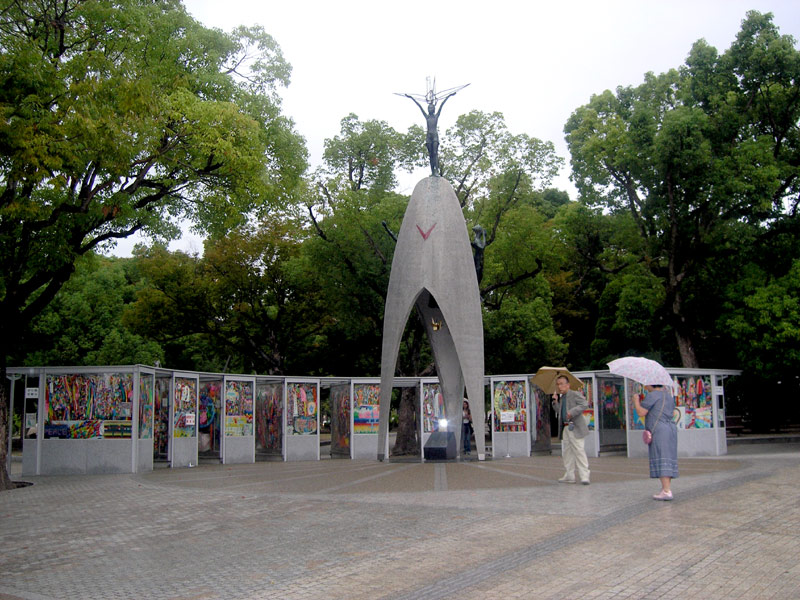
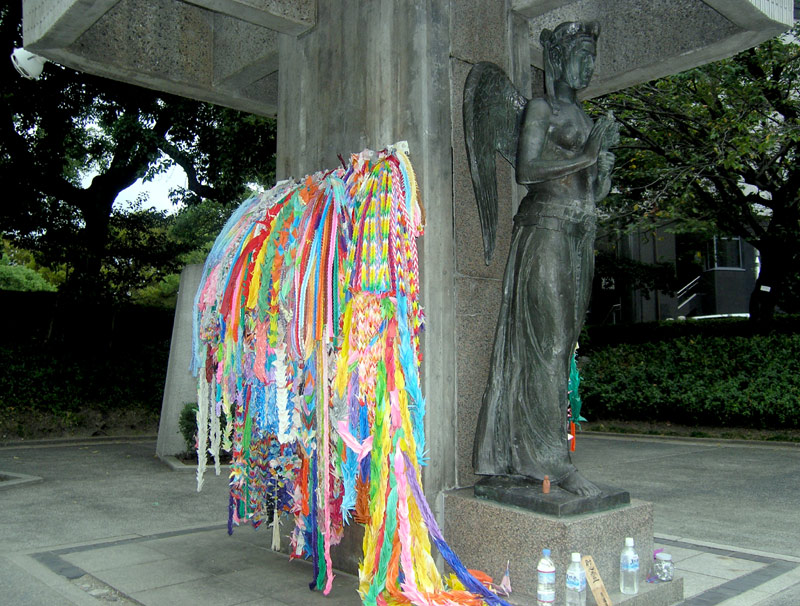
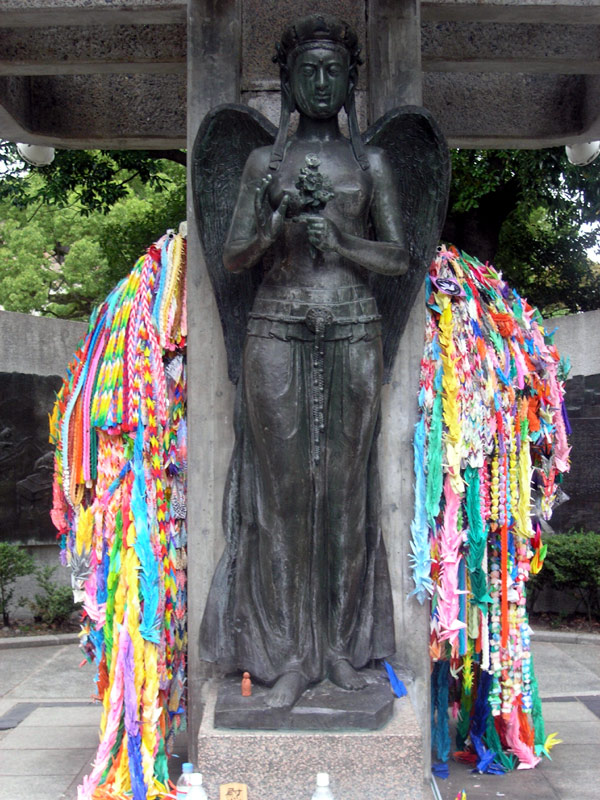
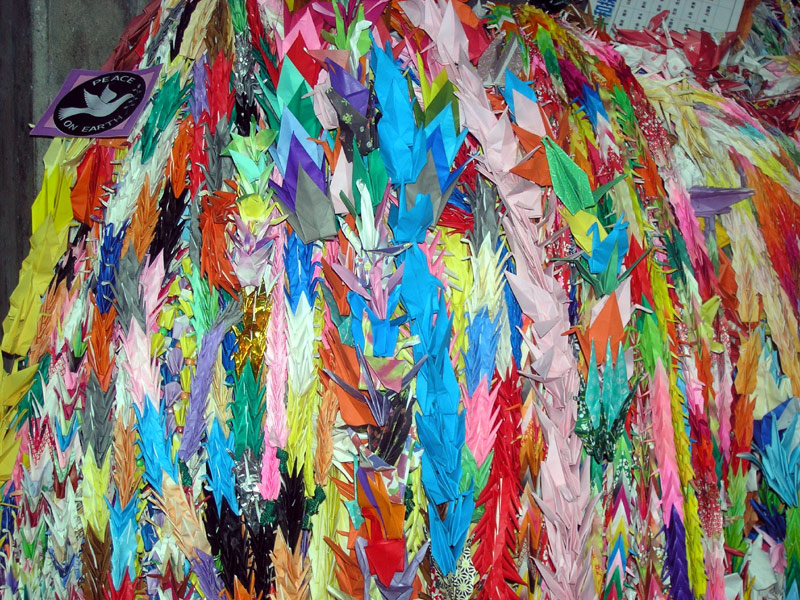
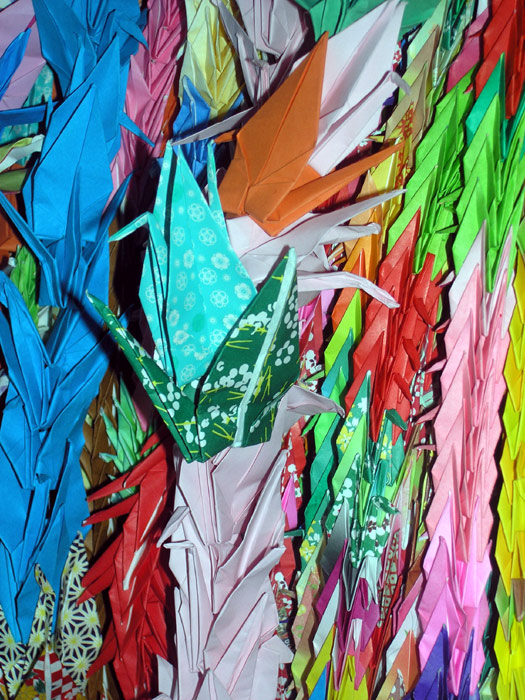
Memorial Cenotaph
This memorial contains the names of all the people killed by the bomb.
See the Wikipedia site for more information.

